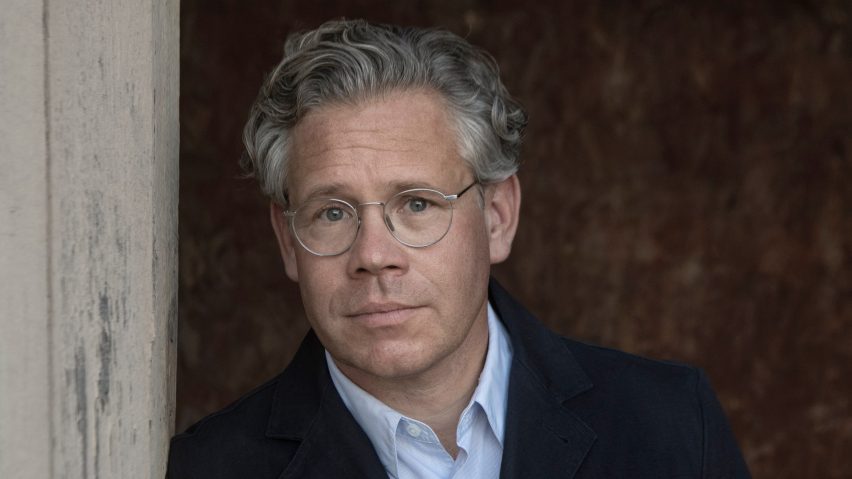Brands should continually evolve their products instead of prioritising new launches, according to Magnus Wästberg, founder and CEO of Swedish lighting brand Wästberg.
Speaking to Dezeen at Stockholm Furniture Fair, Wästberg said it can often make more sense to reengineer an existing design than to develop a new one.
"Just doing new things is not the solution," he said.
"Sometimes we already did the best we could with a product, so there is no use trying to do something new. And just because we did the best we could with a product, it doesn't mean that that product cannot get better."
Wästberg's stand at Stockholm Furniture Fair championed this approach, with two of its three presentation areas dedicated to new versions of products from previous years.
One featured the Raw collection, a series of bestselling Wästberg lights recreated in unfinished aluminium, making them more eco-friendly to produce and easier to recycle.
Another presented the Industrial Facility-designed w162 Dalston, a pendant lamp first launched in 2016, now updated with the latest LED technology.
Wästberg said he believes product development is as much about looking back as it is about moving forward.
"We spend a lot of time improving and further developing our products," he said, pointing to the w127 Winkel task light as an example. It recently relaunched as the w227.
"It was our bestseller, but as it was coming to its 10th anniversary, we felt we could improve it," Wästberg explained. "We re-engineered the whole product and found a way to make it even better."
The CEO said he is only interested in developing new products if they can offer something different to what is already available.
The only new Wästberg launch at Stockholm Design Week was the w241 Faro designed by architect David Chipperfield, the first portable, rechargeable lamp in the brand's collection.
"We want to do the best we can in everything we do," he said.
There have been many calls in recent years – from designer Hella Jongerius to Dezeen columnist Katie Treggiden – for the design industry to get over its "obsession with the new", but the market has been slow to respond.
While reissues of so-called design classics from the mid-20th century have become a common sight at furniture fairs, new versions of 21st-century designs have not.
Wästberg said he prefers to trust his instincts than follow the market.
Since launching in 2008, the brand has become known for "marching to the beat of its own drum" as Wästberg puts it.
In 2013, it pre-empted the trend for customisation with a modular lighting system by Nendo, while in 2017, it stepped back in time with a collection of fire-based lighting.
"At the end of the day, we need to rely on our own convictions," said the CEO.
"If you do too much of what the market is expecting, you're running in a dangerous direction," he said. "It's more important to define a relevant purpose for the world that we're living in today."
The Raw collection features nine products from the existing Wästberg collection, including Industrial Facility's w162 Dalston and a range of pendant lamps from Swedish studio Claesson Koivisto Rune.
The designs come in either brushed, tumbled or polished raw aluminium, with no extra finish or coating.
They tap into the trend for raw and mono-material products highlighted by Dezeen's editorial director Max Fraser in his design predictions for 2024, driven by an industry-wide shift towards "design for disassembly".
Wästberg was on show at Stockholm Furniture Fair, which was open to the public from 7 to 11 February 2024. See Dezeen Events Guide for more Stockholm Dezeen Week exhibitions in our dedicated event guide.
The photography is courtesy of Wästberg. Portrait and exhibition photography are by Andy Liffner.

